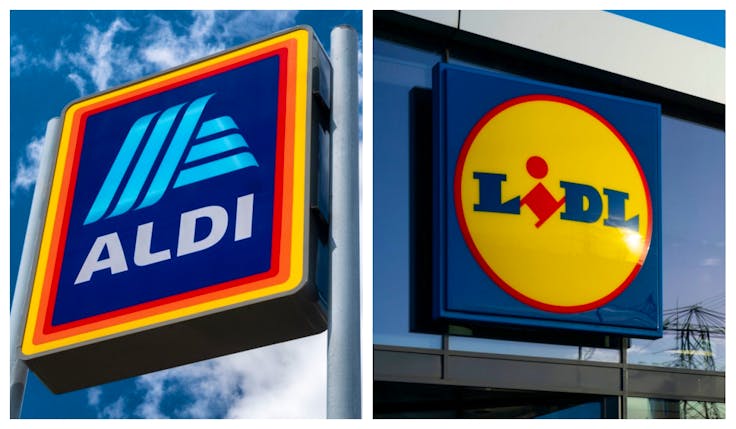Aldi ad banned for ‘misleading’ price comparison claims against Sainsbury’s
The ASA has upheld three complaints made by Sainsbury’s against Aldi.
 Aldi has been rapped by the Advertising Standards Authority (ASA) for making misleading price comparison claims against Sainsbury’s.
Aldi has been rapped by the Advertising Standards Authority (ASA) for making misleading price comparison claims against Sainsbury’s.
Aldi published the a national press ad in question on 6 December in the run up to Christmas. The four-page wrap-around ad included an image of a whole roast turkey, vegetables, Yorkshire puddings, stuffing and gravy, alongside the text, ‘The home of Britain’s cheapest Christmas dinner. Why go anywhere else?.
Additional text in roundels stated ‘Reviewed by Which? Budget-friendly Christmas Dinner’ and ‘2022 price locked’. Text on later pages compared the price of Aldi ingredients to those from Sainsbury’s and claimed that Which? analysis showed Aldi to be 20% cheaper than Sainsbury’s.
Positioning with vs against: Does comparing to rivals really pay off?Sainsbury’s, which was the only complainant, challenged whether the price claims were misleading and could be substantiated, whether they were verifiable and whether the claims of a ‘2022 price lock’ were also misleading.
The ASA upheld all three complaints. It noted that Which? is an authoritative source of consumer information, but highlighted that, when companies use this in advertising, they must be clear to substantiate their claims.
The ad watchdog said readers of the ad would believe that it referred to all UK supermarkets when only seven were included in the comparison.
Aldi’s claim it was “Britain’s cheapest Christmas dinner” was also found to be misrepresentative as Which? named both Aldi and Lidl as ‘budget-friendly Christmas dinner’ award winners, rather than naming Aldi as an outright winner. This was because there was only a 4p difference between the price of the two discounters, so Which? did not give Aldi a ‘cheapest Christmas dinner’ plaudit as the ad suggested.
“We therefore considered the ad was misleading about the basis of the comparison in those regards,” says the ASA in its ruling.
Tesco ‘disappointed’ as it loses appeal against Lidl logo rulingThe ASA also noted that the foodstuffs featured in the ad did not match those included in the price comparison by Which? For example, the ad featured a whole turkey, while the comparison featured a turkey crown. It also featured Yorkshire puddings and stuffing, neither of which were included in the price comparison.
Aldi acknowledged that some products shown did not match the comparison but felt they were representative, and that consumers could easily check which were included.
The Which? analysis also included notations to account for differences in product weights between retailers, but the ASA felt this was not reflected in the ad, further misleading those who saw it.
The direct comparison to Sainsbury’s prices was also criticised in the ruling. The CAP Code requires comparisons with identifiable competitors to be verifiable – meaning there needs to be sufficient information, or a link to it, for consumers to understand the comparison.
As these elements were separated on different pages of the ad it was considered that some consumers would only see the claims, and not the verification.
Aldi argued that the small print in the ad, which explained the comparison in greater detail, was sufficiently prominent, and similar in presentation to small print in other ads.
Own-brand premium products drive success for Aldi and Lidl at ChristmasThe ASA also ruled the price lock claim in Aldi’s ads was misleading. Gravy, stuffing and Yorkshire pudding products were not covered by Aldi’s price lock, neither were several of the products included in the Which? comparison.
Sainsbury’s has discount rivals Aldi and Lidl clearly in its sights. Last November it recorded strong half-year sales growth, achieved in part by eating into the growing market share of the discounters.
A strategy of seeking sales at both the bottom and top ends of the price scale has seen Sainsbury’s achieve its highest market share in a decade. Sales of its Taste the Difference premium range have gone up in tandem with aggressive marketing of its Aldi Price Match promise.
In its third financial quarter, which included Christmas, Sainsbury’s saw grocery sales increase by more than 9%. According to Kantar Worldpanel it was the only ‘full choice’ supermarket to see volume growth in a space increasingly dominated by the ‘limited choice’ discounters.
Arguments between food retailers are increasingly ending in legal action or official complaints. This week Tesco lost an appeal against a High Court ruling that it must stop using a yellow roundel device to highlight its Clubcard Prices. Rival Lidl had argued that this too closely resembled its logo, and the courts agreed.






